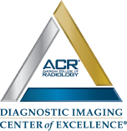
X-Ray And CT Scan Of The Sinuses
What is an x-ray of the sinuses?
An x-ray of the sinuses is a diagnostic imaging test that uses x-ray to visualize the sinuses. Sinuses are cavities, filled with air, that are located near your nasal passages and forehead. CT Scans are a type of advanced multi-slice, demential x-ray.
Small amounts of radiation are used during x-rays or CT scans to visualize the internal organs and bones. X-ray is commonly used to diagnose joint and bone conditions, or to visualize the lungs and heart. Sinus x-rays are just one of several types of x-ray.
When the sinuses are imaged, the process is quick and simple. The procedure is noninvasive, meaning there are no instruments that need to be inserted into the body. An x-ray is a useful diagnostic tool for your healthcare provider. The image can only help your healthcare provider determine that a problem is present. It will not show them the exact cause of the problem.
Better images of your sinuses can be achieved with an MRI or CT scan. Your healthcare provider may want these test performed as a follow-up after an x-ray or instead of an x-ray, depending on your symptoms.
Why would a sinus x-ray be necessary?
A sinus x-ray may be needed if your healthcare provider believes you have one of these conditions:
- An injury to the sinuses
- Sinusitis (inflammation)
- An infection
- Hemorrhaging
- A mass or tumor
- As a follow-up after a sinus surgery
- Your healthcare provider may have additional reasons that warrant an x-ray.
What risks are associated with sinus x-rays?
You and your doctor should discuss the risks associated with the radiation received during testing. Ask how any risks are applicable to your situation.
Take note of any x-rays you receive and any other past diagnostic scans that may have occurred for diagnosing other conditions. Give this list to your healthcare provider. Risks associated with radiation exposure during diagnostic imaging are cumulative and your risk increases with multiple tests over time. In general the risk is low, however good record keeping helps manage exposure.
Inform your healthcare provider if you are currently pregnant or could possibly be pregnant. Some types of birth defects are linked with exposure to radiation during pregnancy. If you are currently or potentially pregnant and need a sinus x-ray, precautions will be taken to prevent fetal radiation exposure.
There may be additional risks depending on your health status and any other medical conditions. You should always speak with your healthcare provider about your risks before you have an x-ray or any other diagnostic imaging test.
How do I prepare for the sinus image?
The procedure will be explained to you by your healthcare provider. Ask them any questions you might have before the procedure.
- There are no special dietary restrictions before the test. You do not need to take any sedatives to reduce anxiety or help you relax before the test.
- Inform your healthcare provider of any possibilities of being pregnant.
- If you have an artificial eye, inform your provider. This can create a shadow during the x-ray.
- If your provider gives you additional instructions before the test, follow them.
- What occurs during an x-ray of the sinuses?
Many sinus x-rays occur as part of an outpatient procedure or the test might be requested during an admission to the hospital. The way the test is performed will depend on what your healthcare provider wants and your specific condition.
In general, a sinus x-ray occurs in this manner:
You are asked to remove any items that may interfere with the test, such as jewelry.
You will be instructed to lie on the x-ray table. Your head will be placed between the x-ray film and x-ray machine. A piece of foam, called a vise, will be used to keep your head still. The vise does not cause any pain or discomfort.
To prevent unnecessary exposure to radiation, the technologist may use a shield or apron to cover the rest of your body.
You will be asked to remain still while the image is created.
If you are having an x-ray due to a potential injury, the technologist will be careful to prevent additional injury and pain. For example, you may need to wear a neck brace if it is believed you may have a fracture of the cervical spine.
In some cases, you may need to be seated in different positions for your x-ray. It is essential that you remain still during the imaging process. Movement can affect image quality and you may need to redo the x-ray to achieve better quality images.
The technologist will go behind a window while the x-ray is being performed.
A sinus x-ray does not cause discomfort or pain. However, you may experience some discomfort if you have to move into various positions or if you have another injury. The technologist will do all they can to keep you comfortable during testing and perform the scan as quickly and accurately as possible.
Once the x-ray is completed, what happens next?
There are no special after-care instructions after your x-ray. If you have other needs, you may receive additional instructions from your healthcare provider.
Services
Contact Details
Address: 1971 Gowdey Road,
Naperville, IL 60563
Phone: 630-416-1300
Fax:
630-416-1511
Email: info@foxvalleyimaging.com
© Copyright 2023 Fox Valley Imaging, Inc..

